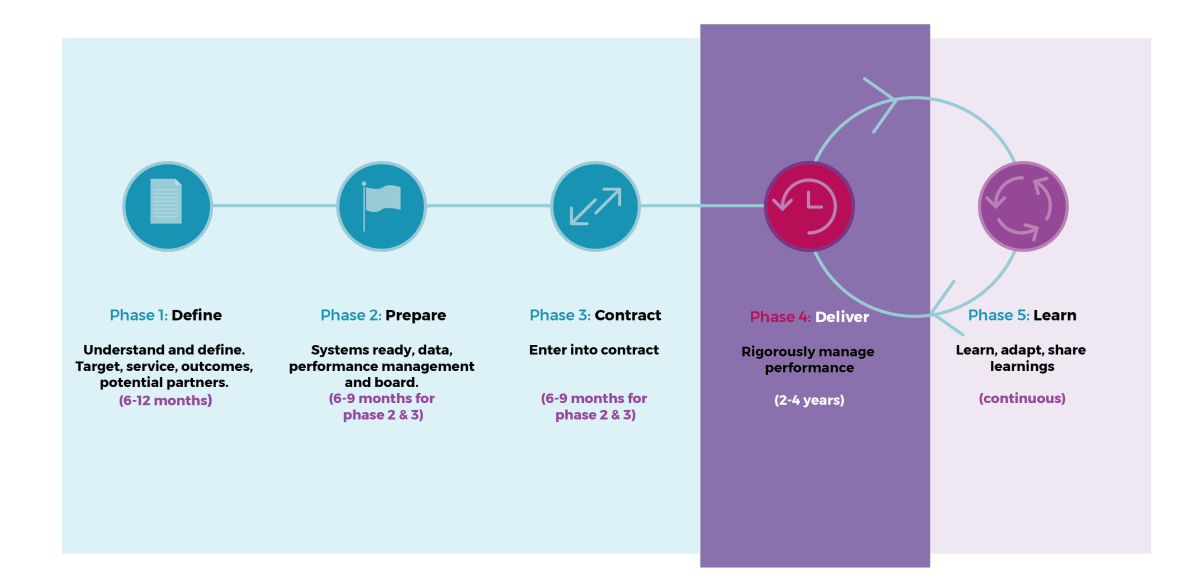A key benefit of SIB delivery is the catalyst it provides for delivery organisations to use their own data more effectively.
You may find that dashboards are useful in keeping everyone informed of progress against the SIB programme design. These can flow directly from your CRM system and provide a snapshot of, for example:
- Participation rates and activities
- Updates to participants’ personal details and circumstances
- Distance travelled and interim outcomes
- Costs
Tools
Example Detailed Service Delivery Tracker
Contributed by ThinkForward
Download Tool
An example of an Excel tool that tracks participation and outcomes in detail.
Example Board Dashboard
Contributed by ThinkForward
Download Tool
An example of a PowerPoint deck which summarises participation, activities and outcomes imformation incorporated in front line tracker, at board-level detail.
Performance Dashboard Template
Contributed by Tony Munton, The Right to Know
Download Tool
An example of an Excel dashboard which summarises outline performance data, with more narrative, notes and lessons learned.
Dashboards have a number of uses beyond reporting to stakeholders, which has been the traditional purpose of management information. This can often be a new way of working for even experienced practitioners, who may have seen dashboards used to little effect in the past:
- Personal development
Dashboards work better when the appetite comes from within the delivery team, and when those on the frontline help to design and implement them.
Within a certain culture, dashboards can be internalised by frontline staff as genuine support to improve their practice, and can lead to personal reflection, training requests and improvement.
- Programme redesign
Dashboards help to create feedback loops between the frontline staff, management, and the board. They enable data to inform and improve new iterations of service delivery by highlighting best practices across teams, and focusing learning on what works, and what does not.
For this to happen, teams need to be empowered and flexible enough to raise flags when issues come up, and propose changes to the programme, even if these are substantial. One way to engender this culture is to ask: allocate time in delivery team meetings to reflect and understand any pain points and potential issues. Try to create a culture of using “data to improve” practice rather than “data to prove”.
- Tracking SIB performance
Keeping a regular eye on input, output and outcome metrics can give those responsible for SIB governance early sight of likely performance against contracts, making it easier not only to manage stakeholders’ expectations but to adjust resourcing to steer the direction of the programme.

